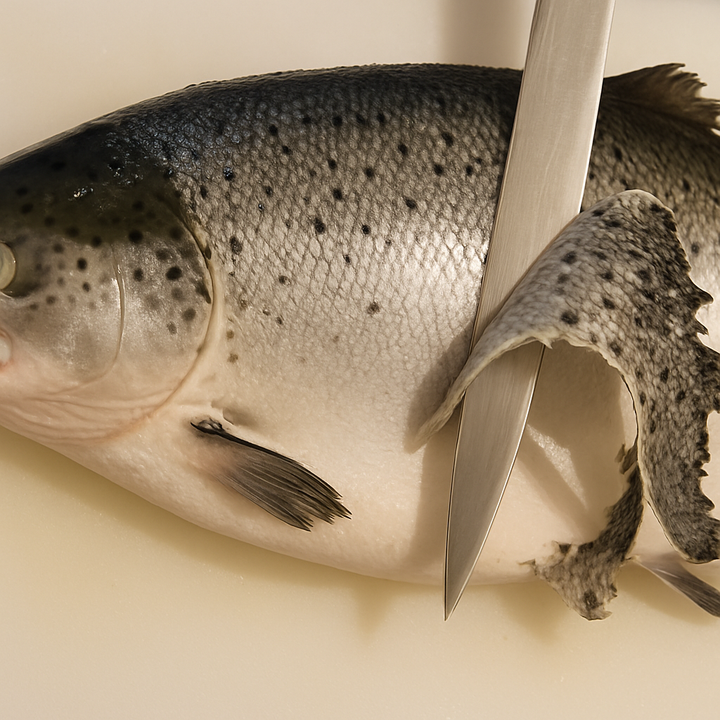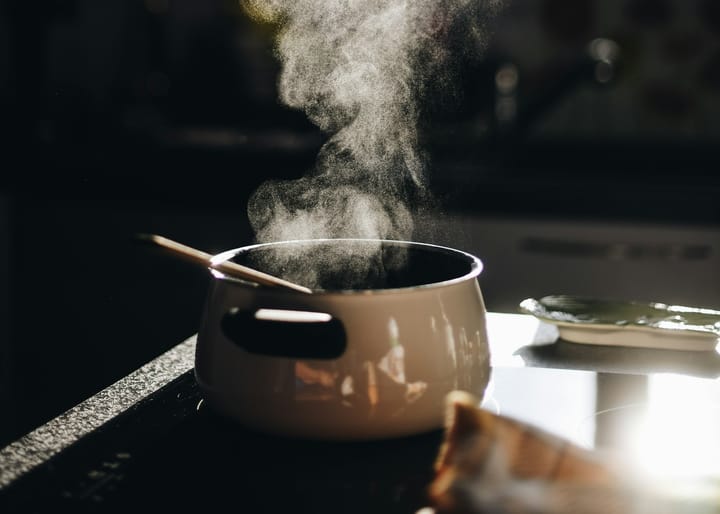Everything You Need to Know About Dry Aging Steak
Dry aging meat is a centuries-old tradition that transforms the flavor and texture of meat to gourmet levels. But why do people go to such lengths, and what makes dry-aged meat so special?
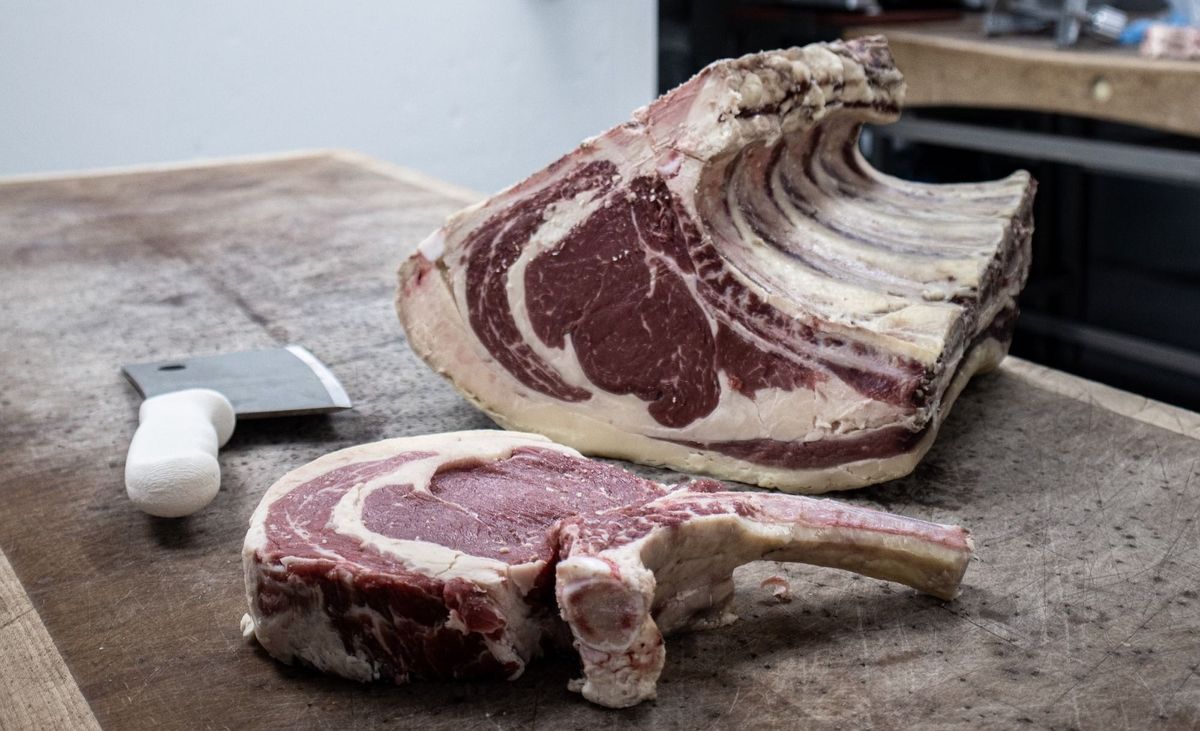
In the culinary world, age can be a secret ingredient, enhancing flavors and heightening our experiences, much like with wines and cheeses. This is particularly true for dry-aged wagyu beef, celebrated for its deeper taste, tender consistency, and premium price compared to regular cuts. But what makes dry-aging so transformative for steak?
Even avid steak lovers might not fully grasp the intricacies of why dry-aged beef tastes so distinct. To shed light on this, we've consulted with food experts and chefs to break down the essence of dry-aged beef and the magic behind the method.
What is Dry-Aging?
Dry aging is like letting beef sit in a special fridge for weeks to months. During this time, the beef changes, losing some water and getting a richer taste. This makes the meat taste different and better than the usual beef you buy at the store. Think of it as beef getting better with time, like a good wine.
The Different Methods of Dry-Aging
There isn't just one way to dry age meat. In fact, the methods have evolved over the years to cater to different tastes and preferences.
Traditional Dry Aging: This classic method involves hanging meat cuts in a controlled environment set to specific temperatures and humidity levels. Over several weeks, a crust forms from continuous air exposure. When this crust is removed, it reveals tender, flavorful meat beneath. The typical aging duration is 21-28 days at 1-3°C with 70-85% humidity. Throughout this period, enzymatic and biochemical reactions enhance the meat's flavor and tenderness.
The world's most expensive dry-aged beef, Polmard cote de boeuf utilizes a unique dry aging process known as "hibernation", where beef is exposed to cold air blasts at 70 miles per hour in sub-zero temperatures. This "hibernation" method has enabled the aging of beef from as far back as the year 2000, producing an unmatched vintage flavor and texture.
Modern Dry Aging with Bags: Utilizing modern technology, vacuum-sealed moisture-permeable bags have revolutionized the dry aging process. These bags facilitate efficient meat dehydration while protecting against external contaminants. As meats age, they attain flavors reminiscent of traditional methods but with the advantages of reduced humidity loss. This means less meat shrinkage and trimming. The combined benefits of convenience and enhanced safety have made this method increasingly popular.
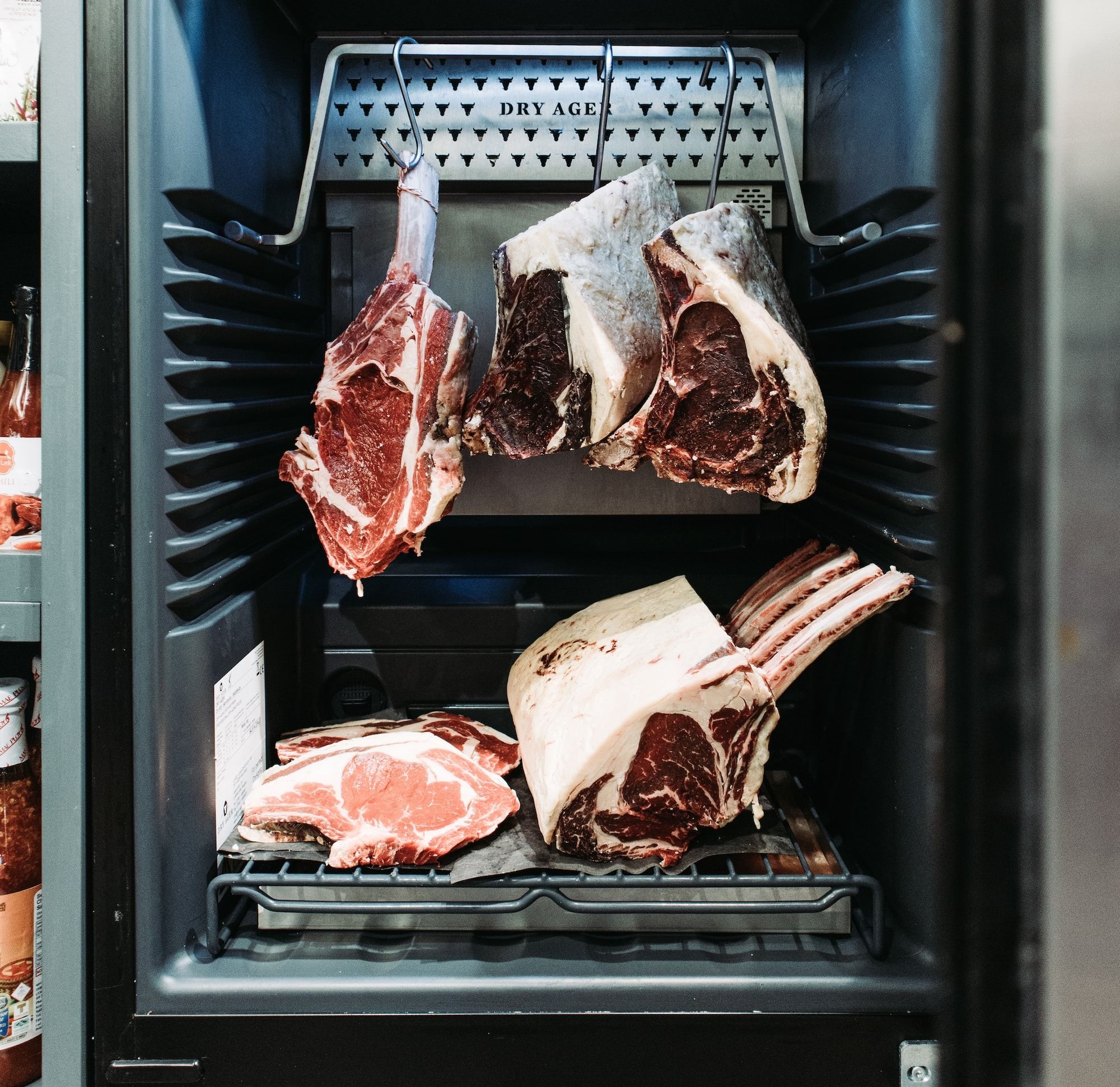
The Magic Behind Dry Aging
Dry aging beef is an age-old culinary method that takes ordinary meat cuts and elevates them to extraordinary gastronomic treasures. So, what exactly transpires during this fascinating aging process?
Tenderization: Nature at Work
First up is the tenderizing phase. The meat's inherent enzymes tirelessly break down those challenging muscle fibers and connective tissues. And what's the outcome? A steak that doesn't merely soften but truly distinguishes itself from freshly purchased cuts. In fact, the level of tenderness in a well-aged steak surpasses what any fresh meat can offer.
Flavor Development
Next, we step into the world of flavor metamorphosis. Although tenderizing leans heavily on enzymes, when we talk about flavor enhancement, it's a dance between enzymes and beneficial bacteria. As days turn into weeks, the aging beef begins to unveil flavors more profound and more intense. The beefy profile deepens, revealing nutty hints, and for the discerning palate, there are subtle cheesy notes in expertly dry-aged meat.
Intensifying Taste: The Essence of Moisture Reduction
Then there's moisture reduction. As the beef ages, it can shed up to 30% of its water content. Though it sounds like a loss, this process is a boon, concentrating and enriching flavors. The outer layers, however, dry out and need trimming, which is why larger beef cuts are usually chosen for dry aging. Despite its reduced weight post-aging, the beef's intensified taste and tenderness place it in a gourmet league of its own.
What Does the Dry-Aged Meat Taste Like?

Nutty: One of the standout tastes in dry-aged beef is its grounding earthiness. Owing to the decomposition of fats and proteins, it evokes flavors reminiscent of hazelnuts or a freshly foraged mushroom. These hints become more assertive the longer the beef ages.
Deep Flavor of Savory: Dry-aged beef proudly showcases the umami flavor, the enigmatic fifth taste. It’s a profound savory depth, akin to a hearty broth or a rich gravy, enhanced significantly by the aging procedure.
Caramel Notes in Early Dry-Aged Beef: As dry aging progresses for around 30 days, the beef's inherent sugars intensify. This concentrates a delightful sweet note, much like caramel, especially prominent in beef that hasn't been aged for too long.
Bold and Cheesy Flavor: With extended aging around 50 days and above, beef can surprise with complex and bold flavors. This funky taste, bearing similarities to distinct blue cheese, arises from the protein breakdown in the meat, enriching it with a diverse range of aromatic compounds. The flavor intensifies as aging process goes beyond 90 to 120 days
Mineral Notes: Certain dry-aged cuts, especially those from grass-fed or free-range origins, might impart a mineral-esque undertone. It's nature's signature, left behind by the very minerals present in the meat.
Best Cuts for Dry Aged Meats
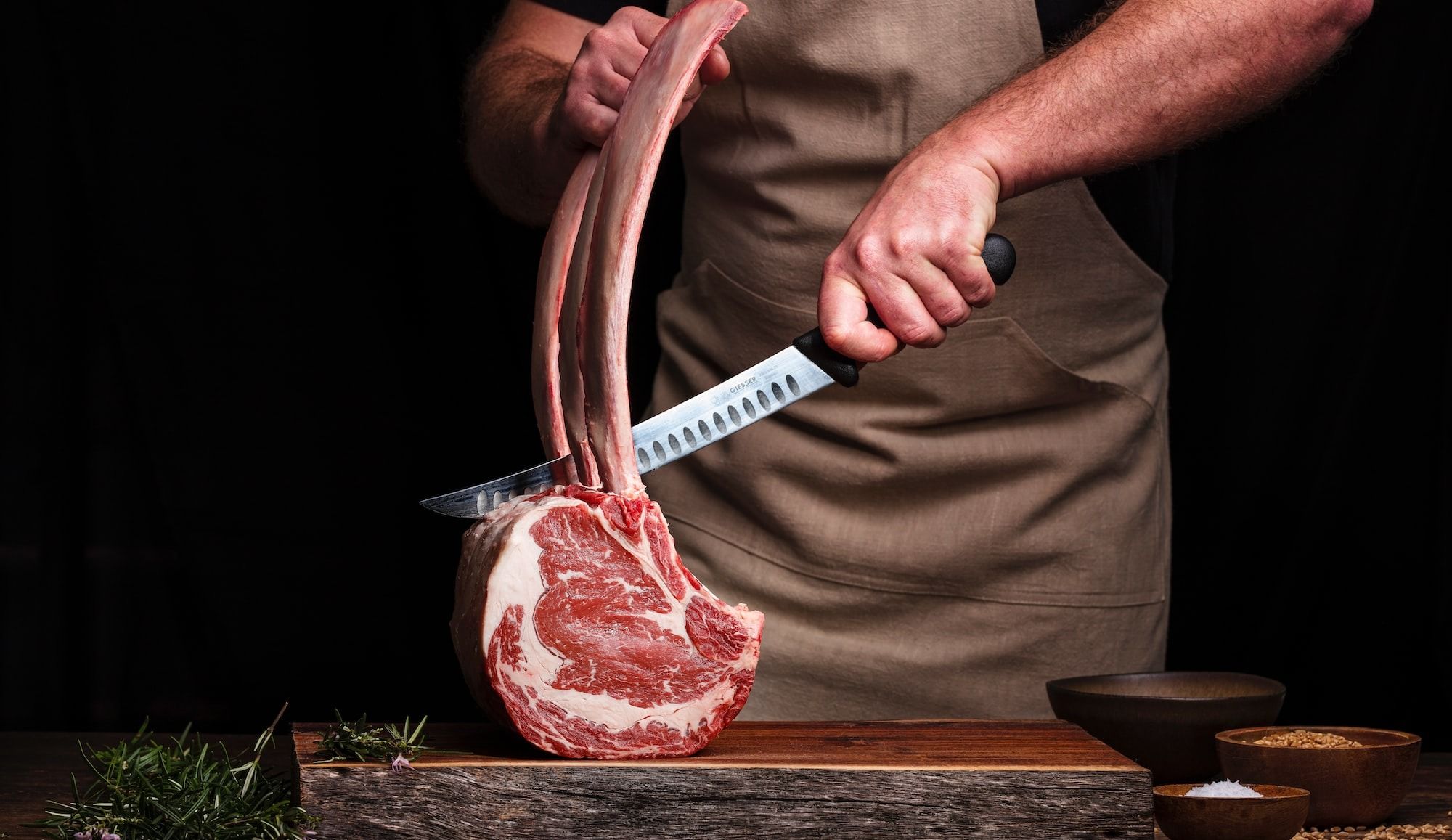
In the realm of dry-aging whether wagyu or pork cuts, selecting the appropriate cut is a game-changer. Predominantly, experts favor aging entire primal sections instead of singular steaks, especially those enveloped in protective layers of bone or fat. These layers act as shields, reducing the amount trimmed off later, thus maximizing the yield.
At the forefront of dry-aging favorites is the ribeye, renowned for its rich fat composition that, over time, transforms into a delectably tender steak with an unmistakable nutty undertone.
Then there’s the striploin or the New York Strip, which, despite being leaner than ribeye, never falls short in delivering a flavorful and juicy experience. Sirloin, which some might overlook due to its leaner profile, can emerge as a dark horse, astonishing many with its tenderness and rich flavor when aged correctly.
The T-Bone and Porterhouse steaks unique cuts meld the best of striploin and tenderloin; with the porterhouse being the grander of the two, it's a top choice for celebratory dinners and feasts. As you venture into dry-aging, prioritize quality cuts that display consistent marbling and have minimal outer fat, ensuring the most flavorsome results.
Is Dry Aging Exclusive to Beef?
While beef is the poster child for dry aging, it's not the only meat that benefits from the process.
Poultry and Game Birds
Chefs and gourmet enthusiasts have been experimenting with dry aging ducks, chickens, and other game birds. The result? A richer flavor and a skin that crisps up beautifully when cooked.
Pork
Picture richer pork chops with amplified flavors and unmatched tenderness. That's dry-aged pork for you. Dry aging pork for 10-14 days is optimal. Unlike beef, which can be dry-aged for extended periods due to its marbling, pork has less intramuscular fat. Moreover, pork's high moisture content necessitates careful attention to the dry aging duration to prevent spoilage or excessive shrinkage.
Why Is Dry-Aging Steak So Expensive?
Dry-aged steak is notably expensive due to the specialized aging process it undergoes. The method demands controlled environments and specific equipment, increasing overhead costs. The beef loses significant moisture during aging, intensifying flavor but also reducing its weight by up to 30%. The outer layer formed during aging is trimmed off, adding to the weight loss. This process, combined with the risk of spoilage and the need for expert monitoring, elevates the cost. Given its unique, enhanced flavor and tenderness, dry-aged steak is a gourmet choice, further boosting its market value.
Is It Worth It?
Dry aging is more than just a method—it's an art form that dramatically enhances the taste and feel of meat. For both culinary enthusiasts and those with a penchant for luxury, the allure of an expertly aged steak is undeniable. If you've never taken the plunge, perhaps now is the moment to explore this timeless culinary tradition.
